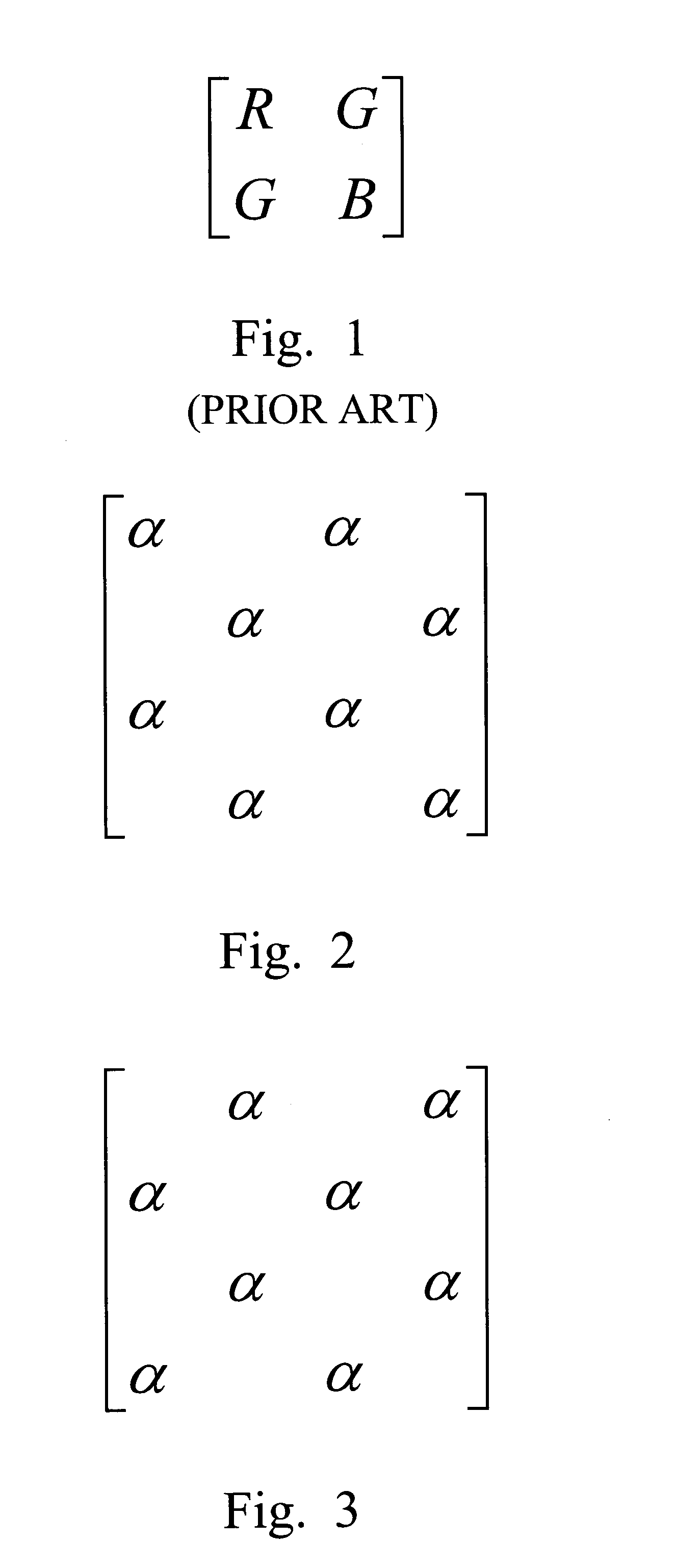Arrangement matrix of primary color LEDs
a technology of arrangement matrix and leds, which is applied in the direction of static indicating devices, instruments, lighting and heating apparatus, etc., can solve the problems of chromatic polarization deterioration at the same time, and achieve the effect of reducing chromatic polarization
- Summary
- Abstract
- Description
- Claims
- Application Information
AI Technical Summary
Benefits of technology
Problems solved by technology
Method used
Image
Examples
Embodiment Construction
[0022]An arrangement matrix of primary color light emitting diodes (LEDs) is herein introduced to solve the problems in the prior art. Reference will now be made in detail to the present preferred embodiments of the invention, examples of which are illustrated in the accompanying drawings. Wherever possible, the same reference numbers are used in the drawings and the description to refer to the same or like parts.
[0023]The arrangement matrix of primary colors (RGB) LEDs of the present invention, for generating white light uniformly, is composed of the first LEDs, the second LEDs and the third LEDs. A 4×4 matrix is defined as a lowest matrix unit. The ratio of the numbers of the first LEDs, the second LEDs and the third LEDs is 2:1:1. Each of the lights emitted by the first LEDs, the second LEDs and the third LEDs is one of the three primary colors. In a preferred embodiment of the present invention, the first LEDs may be but are not limited to green LEDs.
[0024]In the aforementioned ...
PUM
| Property | Measurement | Unit |
|---|---|---|
| distance | aaaaa | aaaaa |
| distance | aaaaa | aaaaa |
| distance | aaaaa | aaaaa |
Abstract
Description
Claims
Application Information
 Login to View More
Login to View More - R&D
- Intellectual Property
- Life Sciences
- Materials
- Tech Scout
- Unparalleled Data Quality
- Higher Quality Content
- 60% Fewer Hallucinations
Browse by: Latest US Patents, China's latest patents, Technical Efficacy Thesaurus, Application Domain, Technology Topic, Popular Technical Reports.
© 2025 PatSnap. All rights reserved.Legal|Privacy policy|Modern Slavery Act Transparency Statement|Sitemap|About US| Contact US: help@patsnap.com



